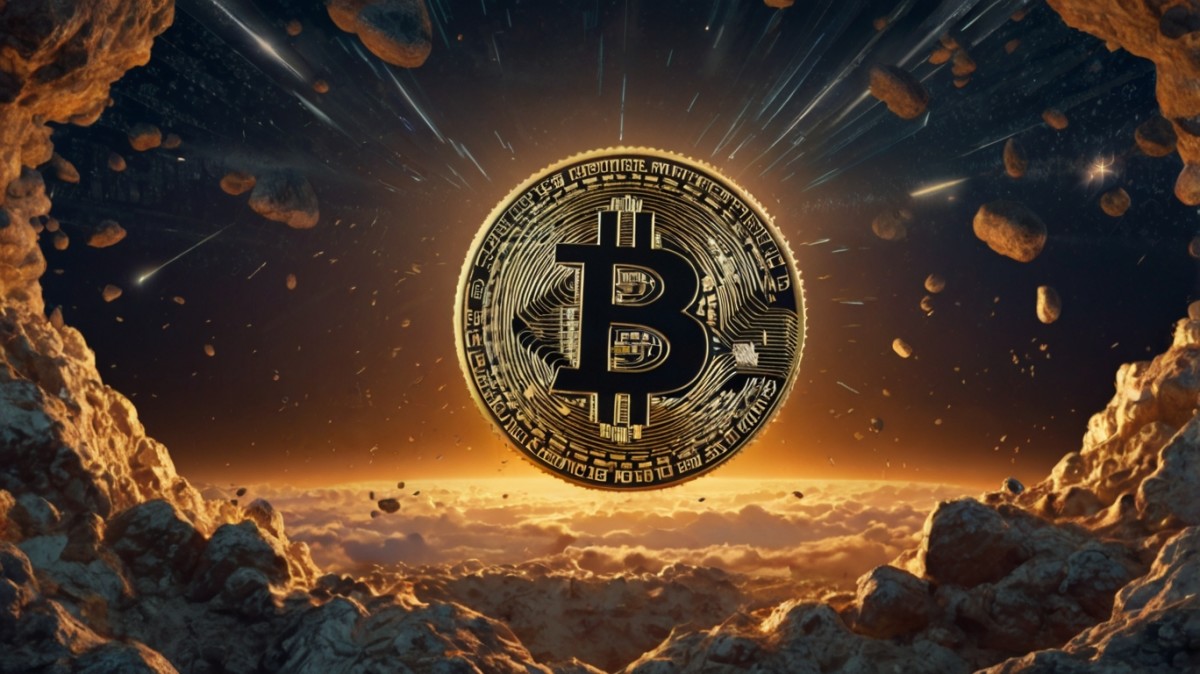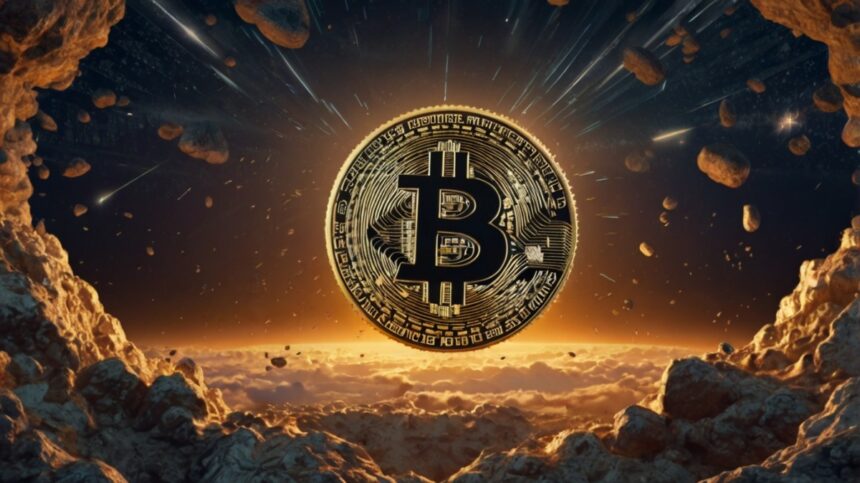
Hyperbitcoinization is the belief that eventually all goods and services will be priced in Bitcoin instead of dollars. If you identify as a Bitcoin maximalist, you may already accept this as a given. But what will this process actually look like over time? What are the key milestones that will indicate that Hyperbitcoinization is happening? In this article, we’ll discuss current Bitcoin financial instruments, the geopolitical reasons for governments to adopt Bitcoin, why central banks might adopt Bitcoin, and more.
Bitcoin and traditional finance combined
As adoption grows, more companies will offer Bitcoin financial products, further integrating Bitcoin into the traditional financial world. Unchained is at the forefront of this world, with financial products including Bitcoin-secured USD loans, Bitcoin inheritance, and tax-advantaged retirement accounts. Unchained is also helping people use these products in a secure self-sovereign manner – encouraging key ownership, collaborative multi-sig custody, and creating a “network of keys.”
Meanwhile, a Sam Altman-backed life insurance company that offers Bitcoin-denominated premiums and payouts offers some insight into the future of Bitcoin’s denomination. Bitcoin’s value will fluctuate in the short term, but it’s safe to assume it will outpace inflation in the long term. What do you think the purchasing power of $300,000 will be in the future compared to 5 Bitcoin? Which would you prefer your loved ones to receive in the event of your premature death?
Initially, we expect financial products with payments denominated in BTC to be long-term. As Bitcoin adoption increases, liquidity will increase and price volatility will decrease. This will make financial institutions feel more comfortable creating products with shorter duration and payments in Bitcoin. This reminds me of how Austrian economists think about hard and soft money when it comes to saving and spending. Throughout history, hard money, gold, was saved and used for larger payments, while silver and other soft money were used to settle everyday payments.
Achieving greater efficiency in existing payment systems
Bitcoin will continue to be integrated more and more into payment infrastructure. There are countless great initiatives in Bitcoin infrastructure, but I want to focus on infrastructure created by Synota. Synota is a company that uses the Lightning Network to reduce the friction of traditional payments between energy producers and consumers. Synota is currently focused on energy payments between miners and energy producers.
In the current payment infrastructure between energy consumers and providers, payments are made every 30 days or more. In this system, the energy provider bears the credit risk. Synota allows for daily or weekly settlements to be made via the Lightning Network. The system ultimately pays the energy provider USD by converting Bitcoin to USD at the end of the process, proving that Bitcoin Rails brings efficiency to traditional payment systems. We have yet to hear of an energy provider accepting payments directly in Bitcoin, but Synota is giving them the option to do so.
Although final settlement is not yet taking place in Bitcoin, the infrastructure exists in the background and will continue to grow.
Geopolitical incentives
After Russia invaded Ukraine, $300 billion in Russian assets held in Western banks were frozen, and the Biden administration recently considered continuing to use those assets to fund the war in Ukraine. Regardless of the morality of the conflict, Bitcoin’s non-confiscable nature provides an incentive for countries to hold a larger portion of their assets in Bitcoin.
Another geopolitical factor to consider is that many countries use the US Dollar and government bonds because they have to, not because they want to. Any attempt to form a financial network without the use of the US Dollar and government bonds would suffer from lack of liquidity and price volatility. This makes it difficult to maintain value in anything other than the US Dollar. As Bitcoin becomes more liquid, we expect it to be used as collateral in the repo market, a market where financial institutions borrow US Dollars, and eventually for payment settlement between non-Western countries.
Bitcoin will become so important that BRICS countries may form a mining alliance to defend themselves in case Western countries try to force miners in their jurisdictions to censor transactions from certain addresses.
Strengthening central bank balance sheets
US Treasuries are considered the safest assets internationally, but monetary policy decisions in response to COVID-19 have recently led to higher Treasury interest rates, destabilizing bank balance sheets. Silicon Valley Bank (SVB) collapsed because it held low-interest Treasury bonds. When depositors realized that SVB’s assets were no longer covering its liabilities, a run on the bank ensued. US Treasuries made SVB vulnerable.
Bitcoin will eventually be seen as an asset to strengthen balance sheets. After the US dollar completely severed its ties to gold in 1971, market volatility increased. Bitcoin will be used as an asset to strengthen balance sheets, and the percentage of Bitcoin held by corporations, financial institutions, and even central banks will continue to increase.
Bitcoin, the world’s reserve currency, and sovereign
One day, a faction in the United States will see Bitcoin as a threat to Western finance and the dollar’s status as a reserve currency. This faction will try to punish Bitcoin holders through high taxes, restrictions on self-governance, etc. Eventually, this faction will succumb to capital flight. Bitcoin-friendly jurisdictions will benefit from an influx of wealthy individuals and their economies will flourish.
Texas is a good example. Texas became a bitcoin mining powerhouse in 2002 when it deregulated its power grid, giving it the cheapest energy prices in the US. Miners fled to Texas from China and New York, and it is now one of the world’s leading mining centers. State capital gains taxes in New York and California also hurt the wealthy, further incentivizing them to move to places like Texas that have zero state capital gains taxes.
These regions will accumulate capital, talent, and power. These incentives will play out on the world stage. Bitcoin-friendly countries like El Salvador will thrive. Those that adopt Bitcoin will experience abundance and growth. Those that resist Bitcoin will experience capital flight.
Will everything be priced in BTC?
At the very least, I expect central bank currencies to be backed by Bitcoin. I think this will have a positive effect on the general public, simply by limiting the confidence swings that are common in fiat economies. A key factor that will influence an “everything priced in Bitcoin” future is how likely it is that people will have direct access to Bitcoin without a third party. If we truly believe Bitcoin will see mass adoption, transaction fees will skyrocket, making it pointless to transact in layer 1 Bitcoin if you’re trading less than tens of thousands of dollars.
Will people hold Bitcoin or hold Bitcoin IOUs? It’s hard to say for sure, but there’s no denying the hard work being done on the ground in Bitcoin development. I came to the conclusion of this post by looking at how groups react to Bitcoin as they pursue their self-interest, but there is an altruistic side to adoption. The ultimate X-factor of hyper-Bitcoinization is developers who turned down high-paying tech company jobs because they are passionate about building freedom technology.
Organizations, companies, and individuals like the developers of Fedi, Lightning, Nostr, and Start9 are working in the spirit of Satoshi to create a finite, censorship-resistant peer-to-peer money for all. If we eventually end up living in a world where all prices are determined in Bitcoin, it will be because altruists have developed the technology to transact in Bitcoin cheaply and self-sovereignly.
This is a guest post by Julian Martinez. The opinions expressed here are entirely Julian Martinez’s own and do not necessarily reflect the opinions of BTC Inc or Bitcoin Magazine.






